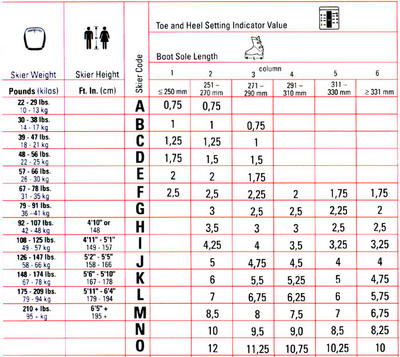knowk yourself out:

Determine the type of skier, from one of the following groups:
I - Cautious skiing at lighter release/retention settings. Skieers who designate themselves "I" must accept a narrower margin of retention in order to gain a wider margin of release.
II - Average/moderate skiing at average release/retention settings. Skiers who designate themselves "II" must accept a balanced compromise between release and retention.
III - Aggressive, higher speed skiing at higher release/retention settings. Skers who designate themselves "III" must accept a narrower margin of release in order to gain a wider margin of retention.
Step 1
Find the Release Code (letter A through O) which corresponds to the skier's weight, as well as the Release Code which corresponds to the skier's height. If they are not the same, choose the one that is closer to the top of the chart. For example if the skier's weight is 175 lbs. (code L) and the height is 5'7" (code K), choose code K as the correct line of the chart to be reading.
Step 2
Make the adjustments for skier type and age.
The selecton from Step 1 is for an "I" type skier. If the skier is "II" move down the chart one code. If the skier type is "III" move down the chart two codes. If the skier is age 50 or over, move up the chart one code.
Note and record the final Release Code letter for the skier.
Step 3
Reading on the corrected release code line from Step 2, find the column with the skier's boot length.
Within the box which corresponds to the skier's Release Code and his or her boot length is a number. This is to be used as the DIN setting for the toe and heel bindings.

